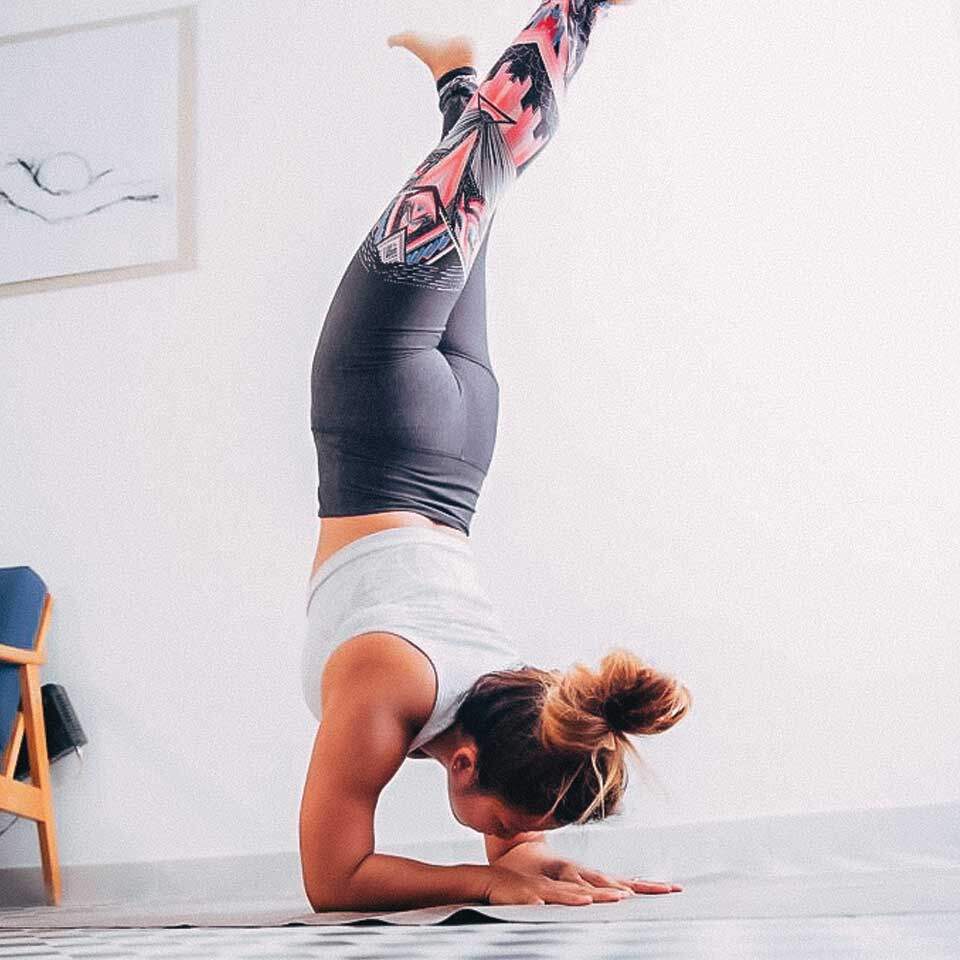Principles of Vinyasa Yoga and the Art of Embodied Movement
What is Tripsichore Vinyasa Yoga?
I have been a student of Tripsichore Vinyasa Yoga since that day in 2013, when I met Heather Alyse at a cozy yoga studio in Chiang Mai and listened in awe as she meticulously dissected a Pincha Mayurasana (forearm stand) into tangible micro steps that would meet students at any stage of their practice. There was real understanding in this breakdown, very unlike the usual instruction of how you “measure” the placement in the arms, jump, and make sure that the shoulders and collarbones remain broad. There was none of that. No jumping. It was a slow motion, micro-step by micro-step analysis of moving from one moment to the next. I was thoroughly impressed. Not only did I want to understand movement in this way, I wanted to teach like that too! I invited Heather the following year to Laos to run a couple of workshops for my yoga students and community. As the principles of Tripsichore unfolded, I decided that I had to go to the source itself, and thus began my study of Tripsichore vinyasa with its founder, Edward Clark.
Vinyasa Yoga and its fight for respect in ever changing industry
Vinyasa flow or Vinyasa Yoga, is often written off as a form of practice that appeals to anyone looking for a workout, and lacking in technique as well as philosophical or spiritual grounding, very unfairly so. And when the somatic community decided to separate themselves from yoga entirely (note that somatic practitioners often claim that what they do is not yoga), it was a massive oversight in my opinion. Fortunately, since the 1970s, there has been a dedicated group of yogis at the forefront of the vinyasa yoga research and experimentation. Under the leadership of Edward Clark himself, these are the folks of Tripsichore Yoga Dance Theatre Company. In a world that is quick to judge and place labels, the yoga world itself has overlooked revolutionary work by this underground group, presumably because the words “Dance” and “Theatre” were dared to be placed in context with the word “Yoga!” Again, another major oversight by “in-the-box” thinkers that has left vinyasa yoga practice fighting for the respect that it so rightly deserves.
Learn Vinyasa Yoga as a somatic practice
Most people have probably never heard of Edward Clark or Tripsichore Vinyasa Yoga. It’s not mainstream. They haven’t resorted to key trending words like “embodiment” and “somatic” (note that I’ve inserted them in the title for the sake of capturing your attention). They don’t run a fancy yoga studio. In fact, they practice in Edward’s home in Northeast London, in a neighbourhood most people wouldn’t even step into. But Edward is the real deal, and while his peers grew to much greater world fame and notoriety, he remained dedicated to the research and development of vinyasa, elevating the practice to something radical, stripping it out of its rigidity and actually using the physically challenging practice to understand and experience the complexities of yoga’s spiritual philosophy.
To meet the world of “conditioned” thinkers, I’ve used the words “Integrated Vinyasa” to describe this practice. And now to the likely dismay of the somatic community, I’m calling this form of vinyasa an “Embodied, Somatic-Informed Vinyasa.” Somatic practice often consists of deep internal exploration, conducted while observing subtle connections throughout the body through slow movement and breath (usually lying down on the floor). Tripsichore vinyasa is a somatic exploration, but in the space of a much more physically demanding practice. It can be done! But yes, it’s much more challenging to do so through a practice that we’ve already developed habits, patterns and conditioned thinking within. Rolling around on the floor in somatic classes has the benefit of a shortcut to identifying patterns of movement and re-patterning because it takes us out of our usual mindset. But how then do we apply it to our daily life? Vinyasa Yoga’s approach takes much longer, but you experience it through stronger physical activity, and thus the learning is easier to transfer to an active lifestyle. Most of us don’t spend our days lying down and rolling on the floor, but we do sit, stand, walk and pick up things.
Tripsichore Vinyasa Yoga’s philosophy and breath principles
Tripsichore vinyasa’s approach is not a “goal,” but rather a continuous and lifelong movement exploration. From my personal experience, the identification of patterns and habits, and re-patterning took a better portion of three years. The next few years is where the embodiment happens, where you start to feel the somatic connection of the breath, muscles AND the fascia as you move between one moment to the next. I say “moment” rather than “posture” or “asana” because this technique prioritises where the breath takes you at present, rather than a future-focused approach of a posture that you may be moving into. It explains how a tilt of the head creates a very specific chain of reaction to the pelvis and toes that results in a controlled lift into an arm balance. But it also explains the simplest of movements, such as how the lift of the arm produces a chain reaction that can create or reduce pain in the lower back. This technique meets you where you are.
On a philosophical level, the requirement for creating intense, single-pointed focus (ekagrata), while in continuous movement in all planes is at the center of the spiritual experience. Tripsichore is an intense physical practice. It takes you on a real emotional journey of fear, doubt, elation, presence, boredom . . . you name it, it’s there. Those that undertake this journey quickly realize it’s a lifetime of practice and dedication. As such, the journey is also of our own personal awareness and of how we evolve. When one enters the space of such intensity, it’s impossible to separate the physical from the spiritual.
The Integrated Vinyasa Series on the Urban Yogis Academy is an introductory insight into this journey. The course is not intense in the way of Tripsichore, but requires a desire to really look into the way you practice yoga. While this technique is best explored within the Tripsichore vinyasa sequences and sun salutations, it is not meant to replace any practice you already have. In fact, it is a complementary exploration to add another layer of understanding to what you already practice. I have structured that content in a way that is palatable and accessible to anyone with a regular practice, no matter the level of intensity of your practice. For those of you interested in flow yoga, it elevates the intelligence of your movements. For anyone interested in somatic movement, I offer you a different space in which to explore. For anyone that is still thinking inside the box, I invite you to erase the line.
About the Author
Julie Moksim is co-founder of Urban Yogis. She is Singaporean by birth but a global citizen by lifestyle. Julie began her yoga journey in Boston in 2003. Today she runs Urban Yogis and a Yoga Cooperative in Laos called Luang Prabang Yoga.


